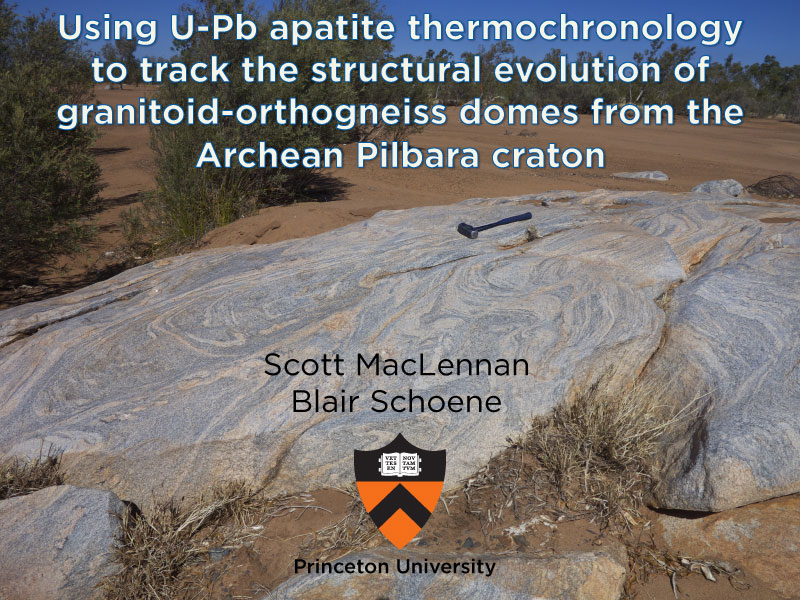
Using U-Pb apatite thermochronology to track the structural evolution of granitoid-orthogneiss domes from the Archean Pilbara craton
Granitoid-orthogneiss domes are an important component of all Archean crustal terranes. The Eastern Pilbara craton contains well-preserved examples of Mesoarchean granitoid-orthogneiss domes whose formation has been interpreted by many within a non-plate tectonic paradigm that hinges upon hotter crustal geotherms that drive partial convective overturn of the crust. This model makes predictions for the temperature-time histories of the domes that can be tested by high-temperature thermochronometry. We use U-Pb thermochronmetry in apatite, which is sensitive to mid crustal temperatures ( 400°C), and thus can track exhumation of gneiss domes from the lower to upper crust. These processes are not recorded in geochronometers (e.g., U-Pb zircon) or low temperature thermochronometers (e.g., U/Th-He, apatite fission track). The convective overturn model for the development of these domes predicts that exhumation of the granitoid ( 3.25 Ga) -orthogneiss (3.45 Ga) domes into the upper crust occurred rapidly (<50 Ma) at 3.25 Ga. In contrast, U-Pb apatite results show cooling ages spanning 100s of Myr. Both the gneissic and granitoid portions of various domes have apatite ages broadly synchronous with the proposed thermo-tectonic event at 3.25 Ga, but also have ages much older ( 3.4 Ga in the orthogneisses) and younger (3.0 to 3.15 Ga in the granitoids). The 3.4 Ga ages from the orthogneisses show that in some cases emplacement, deformation and exhumation occurred rapidly. The ca. 3.0-3.1 Ga apatite ages from the granitoids are consistent with residence in the lower/middle crust near or in the partial retention zone of apatite for >100 Ma after emplacement, followed by exhumation. A craton-wide deformational episode occurs at 3.0 Ga, but is poorly resolved in the eastern Pilbara craton. Our ca. 3.0 Ga apatite dates indicate that this period also drove structural modification in this area. When combined, these data indicate that the eastern Pilbara craton experience a ca. 400 Myr history of intrusion, deformation, and exhumation that resulted in the present crustal architecture, and highlight the utility of U-Pb in apatite as a tool to resolve tectonic histories by constraining the timing of exhumation or emplacement of material into the upper crust, and has wide applications to cratonic or orogenic studies.